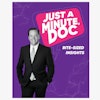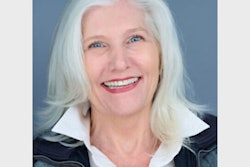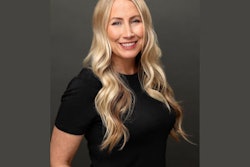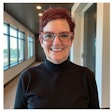In dental practices, it’s often the big things that get our attention, like major procedures, staffing changes, tech upgrades, and insurance overhauls. But the truth is, it’s the small things that tend to cost us the most.
Missing notes, vague phrases, forgotten details, miscommunications between the front and back office: These are the little details that slowly chip away at collections, team morale, and confidence. Luckily, with some awareness and knowledge, these missed details can be corrected.
Denials don’t always announce themselves
 Ashley Bond.
Ashley Bond.
Every practice has seen it: A claim you’re sure should’ve been paid gets kicked back, or, worse, ignored. You go digging, and there’s no obvious red flag. The codes were correct, the policy was active, and you even remembered to attach the x-rays.
But then you look closer. The clinical note is vague. There’s no diagnosis. The provider forgot to sign it. There’s no mention of symptoms or supporting images.
No one made a mistake, per se, but the story was incomplete, giving the insurance company just enough reason to delay payment.
This is the reality for many practices. Denials don’t always scream, "Your notes were bad!" They show up quietly as aging claims, follow-up calls, resubmissions, or frustrated patients wondering why their insurance still hasn’t paid.
Clean claims are a team effort
It’s easy to think of billing as a job that starts and ends with the front desk.
But the truth is, billing begins in the back office with the assistant who notes swelling during intake, the hygienist who observes bleeding on probing, and/or the doctor who diagnoses and plans treatment.
And it’s not only about writing things down, it’s about writing them clearly, completely, and in a way that supports the claim being submitted. This is where teamwork comes in.
The clinical team must understand what information the billing team needs. The billing team needs to be confident that what’s in the chart can stand up to payer scrutiny. And the front office needs to know how to spot gaps before a claim even goes out the door.
When communication breaks down, everything gets harder. But when everyone is aligned -- even loosely -- your chances of clean claims and timely payments go way up.
Notes are the foundation
At Wisdom, we like to say that strong notes tell the story, and strong stories get paid.
That story has a beginning (the patient’s complaint), a middle (your observations and diagnosis), and an end (what you did and what’s next). When those elements are missing, the insurance company doesn’t have the full picture, and they’re more likely to stall.
We also see firsthand that most teams want to write better notes. They don’t have the tools or time. Many doctors are still documenting between patients, after hours, or trying to remember details long after the appointment happened. Additionally, assistants and hygienists may not know what’s needed for reimbursement, and billers are often left chasing loose ends.
There’s no need to overhaul your entire process to implement a smoother one. You only need a simple framework and a little alignment.
SOAP isn’t solely for medical charts
One of the easiest ways to improve your notes is the SOAP method, which is:
S = Subjective (what the patient says)
O = Objective (what you see)
A = Assessment (what you diagnose)
P = Plan (what you did and what’s next)
It’s a template and a way to help everyone on your team speak the same language. It creates consistency, improves clarity, and reduces the mental load of wondering what to write (or how to write it).
And when done well, SOAP notes are more than documentation, they’re a defense against denials, malpractice, and even burnout. It’s not easy, but you don’t have to do it alone.
We know that most practices are already stretched thin. You’re doing your best to provide excellent care, keep the schedule full, support your team, and deal with increasingly complex insurance rules.
Improving documentation might feel like one more thing, but it’s one of the few things that can reduce the stress, not add to it. We created our Clinical Notes Blueprint to help with exactly that. Inside, you’ll find:
- A breakdown of the SOAP format
- Real note examples (good and bad)
- Printable templates
- Quick guidance on attachments like x-rays and intraoral photos
- Tips for getting your whole team involved
If you missed our recent webinar, "Billing Begins in the Back Office," we covered these topics, including the why behind better notes and how they directly impact your collections. You can catch the replay or start with a free download of our related e-book.
The bottom line
It’s the small things that matter most. When those pieces come together, the impact is huge: Faster payments, fewer denials, and a team that feels more confident and less reactive.
And when it still feels hard? We’re here to help, whether you want to do it yourself or have us do it with you. You’ve already done the work. Let’s make sure you get paid for it.
Ashley Bond is the co-founder and chief dental billing officer at Wisdom, a dental billing company. She previously founded Bond Dental Billing. Bond has a background deeply rooted in the dental industry. She worked alongside her father in his dental practice. Bond is passionate about helping dental practices thrive through innovative solutions and effective dental billing strategies.
The comments and observations expressed herein do not necessarily reflect the opinions of DrBicuspid.com, nor should they be construed as an endorsement or admonishment of any particular idea, vendor, or organization.



















